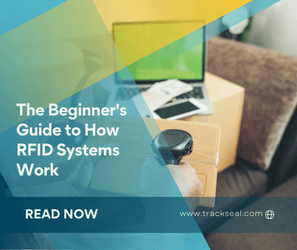The Beginner's Guide to How RFID Systems Work

RFID systems are becoming more and more popular, but many people don't understand how they work. This beginner's guide will give you a basic understanding of how these systems operate, what they do, and some of the benefits that come with them. When finished, you'll be able to make an informed decision about whether or not an RFID system is right for you. So let's get started!
WHAT IS RFID?
RFID stands for Radio Frequency Identification. These systems are used to identify and track objects, usually using a wireless connection. Radiofrequency Identification (RFID) systems are usually comprised of an RFID reader, tags, and antennas.
How Does RFID Work?
The use of RFID tags is convenient for users because it allows them to automatically and uniquely identify the inventory they are looking at. This can be useful in tracking what you have been buying, as well as knowing when something was sold or lost so that no one else uses your stuff!
Types of RFID Frequencies
The Electromagnetic Spectrum is a range of frequencies that RFID transmission systems operate in. There are three primary ranges within this spectrum - Low, High, and Ultra-High Frequencies.
The different types of RFID that reside in the Ultra High-Frequency range have been categorised into two groups - Active and Passive.
Active RFID:
An active RFID system is one where the tag has its own power source, typically a battery. This allows for a much longer range of communication between the tag and the reader - up to several hundred feet in some cases. The downside of this is that the tags are larger and more expensive, which limits their use in many applications.
Applications: Vehicle Tracking, Auto Manufacturing, Mining, Construction, Asset Tracking
Passive RFID:
A passive RFID system is one where the tag does not have its own power source. These tags are much smaller and cheaper than active tags but have a shorter range - typically only a few feet. The advantage of this is that they can be used in a wider variety of applications, including being embedded into products or packaging.
Applications: Supply Chain Tracking, Manufacturing, Pharmaceuticals, Electronic Tolling, Inventory Tracking, Race Timing, Asset Tracking
What is an RFID System?
Every RFID system has at least four basic components, including:
Readers
Antennas
Tags
Cables
The most basic form of an RFID system is when you have a mobile handheld reader with a built-in antenna and tags. More complex systems will require additional devices like multi-port readers, GPIO boxes, stack lights, etc., but all these pieces work together to provide information about what's happening around it via radio waves!
RFID System Benefits
Many benefits come with using RFID systems. Perhaps the most obvious is the ability to track and manage inventory more effectively. This can lead to cost savings, as well as improved customer service levels. Additionally, RFID can help reduce shrinkage (theft), as well as improve safety in the workplace.
Another big benefit is the ability to automate tasks that would otherwise be done manually.
This can lead to increased efficiency and productivity, as well as reduced errors. Additionally, it can free up employees to do other tasks, such as providing customer service.
Finally, RFID systems can provide real-time data that can be used to make better business decisions. This data can be used to improve processes, as well as identify opportunities for growth and expansion.


